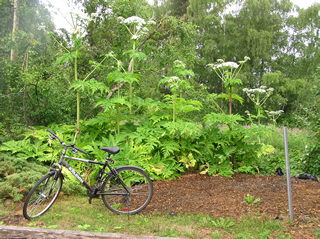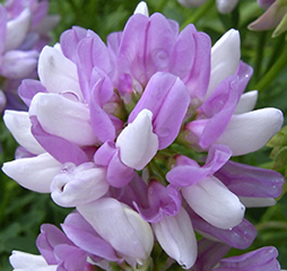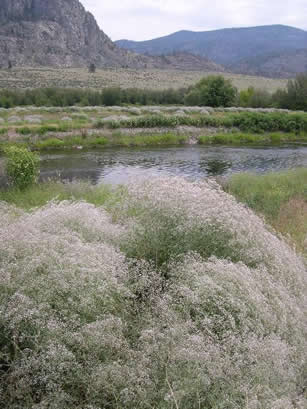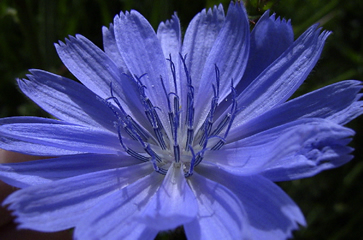INVASIVE PLANT SPECIES

Yellow Iris (Iris pseudacorus) is an invasive species in BC,
photo by Ernie Sellentin.
by
Brian Klinkenberg
|
Report a Weed is a feature of the BC Ministry of Forests and Range Invasive Alien Plant Program aimed at reporting new occurrences of invasive plant species. Read more about their program here. |
Invasive species are a part of the flora of British Columbia. They are most often alien species that have become abundant and widespread in the landscape to such a degree that they replace or swamp the natural species assembly in an ecosystem, and cause havoc with ecosystem function. There are often economic implications associated with invasives, such as in rangeland areas where they replace important browse plants. When an invasive species moves into an ecosystem, it can sometimes completely blanket an area.
The invasive species problem is a complex one. Invasive plant species affect food sources for wildlife, can influence pollinator availability, and can crowd out native species directly. We are now seeing dramatic changes in bird populations, elk herds, reindeer herds, and other wildlife as a result of the replacement of native plant species by alien species. While some animal species can adapt and feed on alien food sources, many cannot.
A comprehensive discussion on invasive plant species in the Georgia Basin, prepared by Pamela Zevit for E-Flora BC, can be found here (pdf).
WHICH SPECIES ARE CONSIDERED INVASIVE?
There is presently no single list of invasive plant species for BC, although many invasive plant councils in BC have identified the top invaders in their region. However, at E-Flora BC we have compiled a list of invasive, noxious and problem weeds for the province. These are species identified in these categories by various BC agencies and groups in the province. . Click here to view the list.
Because new and potentially invasive species continue to arrive in BC, this list will be continuously updated. We also provide a working list of species that experts feel should be prohibited in British Columbia. These include species that have already arrived here, and species that have not yet arrived, but would be significant threats if they moved into the province.

Giant Hogweed/Giant Cow Parsnip (Heracleum mantegazzianum) is an alien
species, photo by Hugh Griffith.
GENERAL DEFINITIONS: ALIEN VERSUS INVASIVE
Alien Species: An alien species is a species that occurs in a region where it is not native. Many alien species in BC are from Europe or Asia (the majority of our alien species) but some alien species have arrived here from eastern North America, or South America. Not all alien species are invasive. Many simply occupy disturbed sites, such as roadsides, and do not displace native species.
Invasive Species: Invasive species are (usually) alien species that have moved into natural ecosystems and have altered ecosystem characteristics, either through their sheer abundance or through structural changes in the system. They can change plant community composition, which ultimately affects the wildlife that can occur there.
Visit our Advanced Search page in order to call up a list of atlas pages for invasive plant species in BC. Click on "invasive" and "vascular plants " in order to produce a list. |

Common Crown-vetch (Coronilla varia) is an alien species in BC,
photo by Diane Williamson.
TICKING TIME BOMBS
An introduced species can occur in an area sporadically or innocuously for many years or decades before exploding in numbers and sweeping through the landscape. There are many factors that drive this, including the effects of annual or cyclical climatic variation. Periods of drought often favour alien species reproduction and dispersal. In addition, the longer flowering periods of many invasives can allow more successful reproduction and dispersal. As a result of their greater success, invasive species are fueling massive ecosystem shifts, both in terrestrial and aquatic areas. The implications of this are immense.
HOW DO INVASIVE SPECIES GET HERE?
Alien species arrive in BC by several pathways of introduction. They arrive as seed sources in cattle feed, they hitch a ride on
trains and other transport methods, including recreational vehicles,
they come in with horticultural imports, they arrive in ships’ ballast
and are flushed into our bays and harbours, they are used in landscaping
and 'beautification' projects, they are brought in for aquariums.
In the right conditions, they like their new home and spread quickly.
CONTROLLING INVASIVE PLANT SPECIES
Once invasive plants have arrived and spread,
the problem becomes one of control and reduction of spread. Methods
of control for invasive species range from direct hand-pulling
of plants, such as is frequently done for purple loosestrife, to
chemical control for widespread invasives such as knapweeds, to
biological control. Biological control can include the use of beetles
as predators on specific species, such as purple loosestrife. This
has had some mixed success.

Baby's Breath (Gypsophila
paniculata) is an alien species in BC,
photo by Amelie Rousseau
HOW CAN YOU HELP?
Redressing the problem of invasive species will take the efforts of governments, scientists and individuals. You can help in several ways:

Chickory (Cichorium intybus) is an alien species commonly found
along roadsides and disturbed sites,
photo by Diane Williamson
Recommended citation: Author, date, page title. In: Klinkenberg, Brian. (Editor) 2023. E-Flora BC: Electronic Atlas of the Flora of British Columbia [eflora.bc.ca]. Lab for Advanced Spatial Analysis, Department of Geography, University of British Columbia, Vancouver. [Date Accessed]
E-Flora BC: An initiative of the Spatial Data Lab, Department of Geography UBC, and the UBC Herbarium.
© Copyright 2023 E-Flora BC.